Genre: Shmup Developer: NCS Publisher: NCS Players: 1-2 Released: 1992
Back in the late ’80s and early ’90s, shmups were being released like no tomorrow. Thanks to the latest advances in computer technology, games like Gradius III, Thunder Force II, Blazing Lazers, and Super Star Soldier were wowing shmup fans the world over with their brighter colors, improved sound, and faster…more intense gameplay brought by the legions of enemies the games were able to process. Produced by NCS and Masiya (of Target Earth Fame) in 1992, GleyLancer was among the many shmups released to consoles in those middle years of the genre and was sadly denied a US release.
The story in GleyLancer is overtly large (especially for a shmup) and told through a Ninja Gaiden-esque intro and cut scenes. In the year 2025 the federation is at war with a nefarious alien menace of some kind. While the Federation fleet is moving toward whatever destination, one of their flagships falls under attack by the enemy and is teleported away with its captain to places unknown. Cut to the Captain’s daughter (who happens to be a fleet pilot), who after sulking for a bit decides to steal a prototype star fighter and jet away in search of her father.
At first glance, the game may not appear all that special. Aside from a few nice anime-style renderings of the heroine, the game appears rather drab from the overtly low color palate. All doubts fade away as the smooth slowdown free animation and awesome layered parallax set in. This game can move quickly when it wants too, and it often will, forcing you to rise to the occasion.
However, the sound is mediocre. It’s mediocre even next to other Genesis shooters like Sol-Feace or Final Zone, whose sound libraries consisted of little more than two booms, two rattles, and four weapon effects. While GleyLancer also tries (emphasis on “attempt”) at digital speech, it’s of such comical quality that it ALMOST detracts from the game.
Music, while slightly lacking in quality, is superb. Fitting the feel of each level almost like a glove, be it the stage one asteroid field, a slow-paced cave, or the high-speed level, the music almost always serves to complement the level. Plus, the music is of such high volume that it often overpowers that stupid voice to the point where you’d HAVE to listen for it.
The area where this game truly shines is the one where any shmup worth its obscenely inflated price should: the gameplay, and GleyLancer shines like a nova. It plays much like other hori-shmups like Thunder Force II and III. Aside from a standard (and effective) pulse laser, you’ll also have up to two option-like “movers” following your ship on your top and bottom flanks, and this is what prevents GleyLancer from ever falling below average.
Before you begin your journey, you’ll choose your Mover formation. The Movers will behave differently depending on which formation you choose. There is the standard formation, which fires in the direction you fly. The Reverse formation (my favorite), which fires in the opposite direction you fly. Multi-formation and R-Multi, which causes the options to swing in a switchblade like motion covering their area of the ship depending on where you fly. The follow formation behaves like the standard option formation in the Gradius series. The Roll formation has the movers rolling around your ship. Finally, the homing formation lets the options automatically fix on their own targets. The C button will offer a function to each of these except for the homing formation. Holding C In the first five locks the movers in place, letting you continue firing in those directions and move freely. In the roll formation, it toggles between outward fire and forward fire. With enemies coming at you from all directions, you WILL need to redirect fire quite often.
Power ups are received from the standard overtly conspicuous containers that pop up at scripted occasions throughout the game. The one difference between these and other containers from other games is that you can collide with them and die. You can only use one power up at a time, and only two movers at a time. Thus, to use two of one type, you may fly into an unwanted weapon before flying into the desired weapon second… switching as new power-ups come by.
The available weapons include the standard twin-shot, the short-range burn cannon (essentially a flame-thrower), the reflecting bound-shot, the laser, the slow-weak spread shot, the saber, and the boss busting spread-bomb. All the weapons have their ups and downs, and you should choose based on the situation or your abilities. The scenarios are often open-ended enough to allow at least two practical choices to get by. For example, one stage has many twisting corridors lined with cannons. You can either use the Bound shot and angle your fire so they rounds into your targets, or you can use the burn shot, which will angle and fire parallel to any surface at close range.
The A button toggles four speed settings on your ship, letting you change speeds for dodging obstacles, weaving through fire, or otherwise evading harm. You’ll need to use this as well. But not as often as the C button. You can set your default speed at the options menu, and you’ll want to as well, as the standard startup speed is far too slow for general purposes.
At first the game may seem overly simplistic at first, numerous formations are rather simple and easily dispatched. The early bosses are also pathetically easy, between the first boss who is a lesser threat than the background which masks the debris it tosses, or another boss that only turns into a dodge-fest when you stop firing and show mercy. You’ll likely be tempted to go back and up the difficulty.
Thankfully, Gleylancer picks up the slack before you’re halfway done. Just as you get used to mowing down mindless kamikaze drones, the game throws more and more curves at you, until finally laughing at you in later levels, openly taunting you with nefarious turrets hidden away behind a hill guarded by moving cannons that fire at pretentious intervals. Offering you little more than a saber and twin shot to make your way through.
Respawning works along the checkpoint model, and while it always takes you far back enough to retrieve needed weapons, weapon pickups are often far enough apart to make dying more annoying than anything else. Also, this presents a common problem with horizontal shooters. You’ll often find yourself tiring of the less exciting levels and find it annoying to sit through them to get to the better ones. But if you play shmups of any kind, you should be used to this.
Despite all this, it’s never too easy like Thunder Force III or too hard like Truxton. It never feels so tiresome that you’d ever leave it on the shelf forever. It all feels like a well-oiled machine. GleyLancer is a thrilling ride that can leave you with numerous memorable moments coupled with well-drawn (even if contrived) cut scenes. Much like the famous Radiant Silvergun, GleyLancer is one of those gems that may well be worth its inflated value on eBay, despite all the bumps in the road.
This is by far one of the best shmups I have ever played, and quite possibly the best I’ve played on the Genesis.
SCORE: 8 out of 10


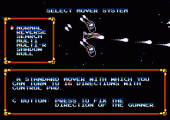
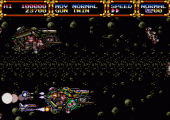
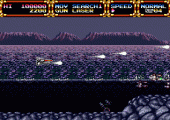
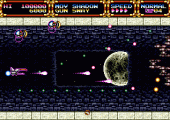
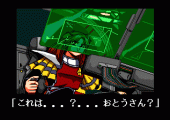
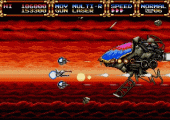
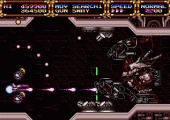
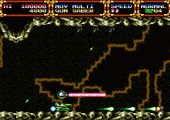
A shmup with a great story (!) and presentation, but in the end of the day, the gameplay doesn’t quite hold it up. Perhaps the awesome synthrock music does.